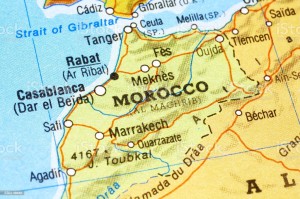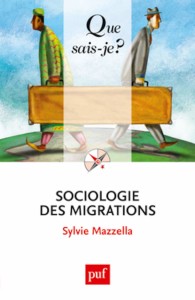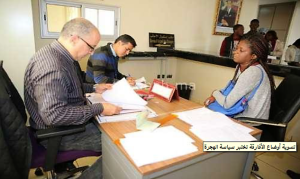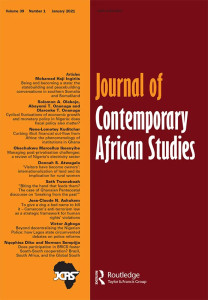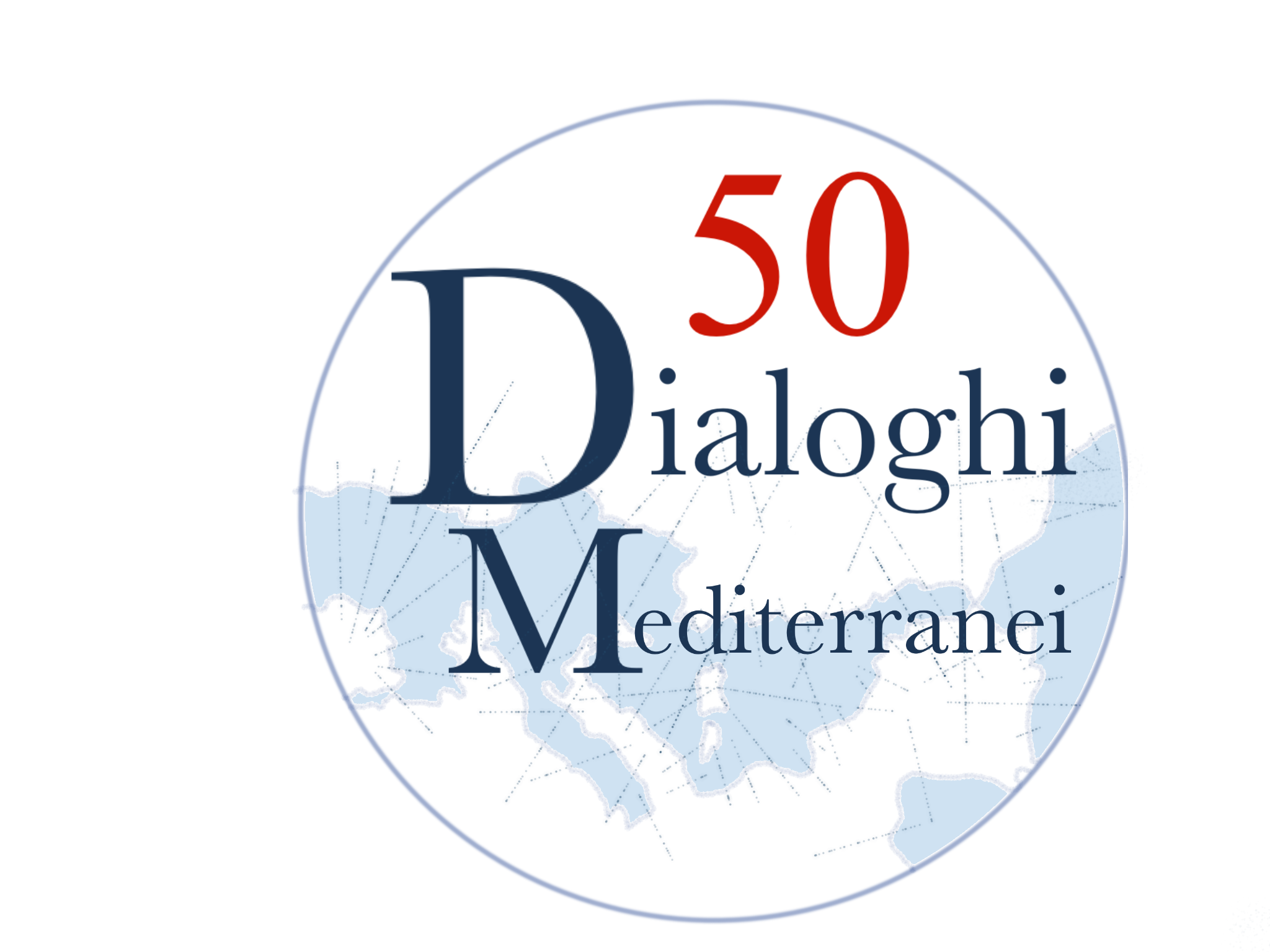Introduction
Mass influx and migration have become one of the most widespread phenomena that have closely been tied to climate change mainly drought and deforestation. African continent, amongst others, is a place of unbearable heat and drought. It is due in part to climate type which wraps the continent throughout the year. The hardship of life has additionally worsened the situation throughout the walks of Africa. More than ever before, migration has been faced by a set of challenges. Individuals’ movement and mobility have been hindered by borders between states along with laws which have been imposed by the host countries on the foreigners.
A wide range of studies and researches carried out in this regard targeted migrants in the host society. It has become thus the key cause that leads us questioning the host society trying to devote our due attention to the researches undergone in this arena. The aim above all is to understand the way by which those societies earn commonly their living and their ability to accept others. One little thing is also there to argue, it is the negative stereotypes that are still attributed to migrants.
The influx of migrants who are destined to Morocco as a host land has brought to the fore undesirable stereotypes and negative representations about the foreigners. Amongst these stereotypes ascribed to the sub-Saharans and West African migrants we can mention “the blacks” “Elhartani”, while migrants who came from Europe are characterized by the others as being “the unbeliever in God” and “bisexual” and “the Jewish”. Yet the noticeable is that the traits attributed to the European migrants are less insulting compared to the ones accredited to the sub-Saharans.
The social representations along with stereotypes have widely caught our attention while dealing with such research in Agadir. This resulted in providing attaching great importance to the analysis of the issue seeking to unearth the root-causes of such stereotypes towards migrants. The excessive number of migrants heading to Agadir has helped us to fully understand and analyze the key causes of the circulated stereotypes attributed to the black Africans and the whites as well, mainly those of sub-Saharan countries. They are socially represented negatively and stereotyped as a result not only of their color but also other traits. A key question of a great importance has come into existence in this regard. How does the host society view migrants? We aim at analyzing and explaining the integral values and conditions that underline those social representations and stereotypes. To this end, Agadir has been chosen first as a field of research and second as a host society of migrants.
Research methodology
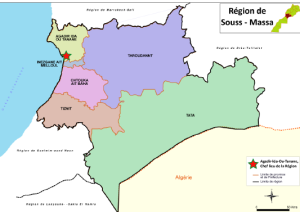
General monograph, Kingdom of Morocco, Ministry of the Interior, General Directorate of Local Authorities, Souss-Massa region, 2015: 3
This study is mainly based on the interviews. On such basis, we were able to come with the fact that stereotypes have led to the birth of many undesirable behaviors, racism, and discrimination are included. However, many associations have regularly called for the eradication of violence and insisted on the co-existence between the individuals in the society despite the differences that lie between them. So doing remains the only way to resolve such sort of crisis along with the issues resulted in migration. The objective is to integrate migrants in the process of development within the host land.
At the core of this research lie twenty migrants, men and five women, and Moroccan people, whom I interviewed in thirty minutes to one and a half hour chunks. The location of interviews varied depending on the migrant’s preference and spontaneity of the situation. Most migrants chose their interview location according to their comfort – be it in cafes, parks, while Moroccan people chose their own home, some of them were interviewed in group settings, with neighbors, friends, or strangers who happened to be in the proximity, while others were interviewed individually
Agadir as a contact zone
The survey entails around nine migrants, ranging from twenty-four to thirty-three years old. Both sexes are included. They are originally from sub-Saharan countries. Their familial situation ranges from the married ones with kids to singles.
From this chart it becomes clear that the case study which is targeted in this research is constituted of different ages of both males and females. However, youth appear to cover a lion share. The Moyne age does not exceed twenty seven years, with some exceptions mainly seven out of them move on to thirty years. Two of them out of the total are of the age between thirty and fourth years. Females themselves constitute twenty percent above all.
Regarding the gender variable, the category of females is two out of ten. It is about twenty percent; however males are eight ones, which respond to eighty percent. The variable of gender remains one of the significant variables that framework the issue of migration mainly that of sub-Saharans. This category is best known by the migration of males more than females. Also, it has to be noted that most of females who migrate are married who escort either their spouses or others. The omnipresence of women remains the key characteristic of this migration which actively contribute to the progress of dynamism and mobility of migration not only the one that has come from sub-Saharan Africa but also other parts of the globe.
Social representations along with the stereotypes have played a paramount role in the identification of others by other members, be they from the local culture, the host ones or even our experience and interaction with others (families as well as other forms of media). It is additionally worth mentioning that stereotypes might be either real or fake landmarks that are attributed to the individuals as their major characteristics, which are most of the times social representations.
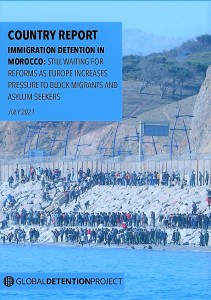 According to the theory of social representation, it can be said that the information adding to the other data that are present in the daily thought of human beings are the outcomes of both commonness between what social and individual (Shahinaz, Bin Malukah, 2015: 203). The interaction between individuals has thus come as a milestone of the construction of those representations, either by events, speeches or practices, which eventually lead to the emergence of such stereotypes.
According to the theory of social representation, it can be said that the information adding to the other data that are present in the daily thought of human beings are the outcomes of both commonness between what social and individual (Shahinaz, Bin Malukah, 2015: 203). The interaction between individuals has thus come as a milestone of the construction of those representations, either by events, speeches or practices, which eventually lead to the emergence of such stereotypes.
Based on the fieldwork interviews which have been made with migrants, Senegalese included in Agadir, we found that a great number of representations and stereotypes against migrants from sub-Saharan countries are black and spotted with negativity. It is also traceable to the sense of enmity towards these categories. To exemplify, the list of images that have been brought against migrants is long: theft, marginalization, aids carrier, blackness, “Ebola” [1] carrier, unclean, beggars and the like.
To understand hence the root of such negative images that have been still attributed to migrants, fieldwork come a must then. Simply because it remains the starting point to better expand and promote knowledge in this regard. That is to say, a field work interview has imposed itself as a successful apparatus to imperatively come up with an authentic social fact. In this vein, we can say that sociology has to be that of meeting and intersection (Mehdi, Alioua, 2011: 14).
From my own point of view, I can say that the blacks are marginalized, neglected and live in the worst conditions. We can take Tiznit as an example in which they are busied to clean streets, while in Agadir notably in Sonaba neighborhood they are stealing the passengers, mainly Senegalese. From the point of view of the interviewees, migrants who are originally from sub-saharan countries are not else but criminals and marginalized people as well. The first interviewer (Personal Interview, Man, and Age 47 years old, 2019) argued, according to what has seen in Tiznit which is far from Agadir around 100 km, migrants involved themselves in the humane deeds that benefit the city as a whole and its residents. And this respect, he stated that migrants are able to well- position themselves socially in that city.
The criteria of labor remain then the only way that socially placed them. Not only so but also it helps them to be socially and economically integrated. But, the other interviewees claim that Senegalese migrants resort to theft which would be possibly turned into other undesirable and severs phenomena and criminal acts (Personal Interview, Man, and Age 52 years old, 2019). On the contrary, the Moroccan State has developed an approach that has been followed during the last years of the new migration policy has been to act simultaneously on three levels regularization of irregular migrants, opening of rights and integration of migrants and refugees in public services, and upgrading of legal and institutional frameworks (Moroccan Kingdom, Ministry in charge of Moroccan living Abroad and Migration Affairs, 2017: 14). This contradiction shows the need for a second approach that is based on working with the native people in order to change their beliefs for the purpose of to live together.
From Integration to exclusion
According to the interviewees, migrants have been still living in the worst conditions which are manifested in their marginalization. So that resulted in their exclusion from the social environment in their place of settlement. Such exclusion appears in both sides that distance themselves and that of being so far. Simply stated, they are marginalized, deprived and being even banned from exercising their activities in daily basis.
The concept has appeared in sixties within social sciences and has thus become used widely in seventies. It has formed a convenient source of theoretical and methodic resort to the dilemma in which the majority of studies have fallen including poverty and migration. The issue of those studies lies in the fact that they failed to move from the empirical framework to the theoretical one, which resulted in the absence of the concept in the social and political speech. The reason is that the concept of inequality has been omnipresent. Yet the latter has still been restricted to the crisis of the social reality no more.
This has lead to the emergence of new concept. The harshness of migrants’ situation as an example is not an outcome of the dominating relationships but the results of conditions related to the individuals experiences which have been taken to encounter the crisis of integration in the host country and the identity loss which started to take place increasingly (Buthaina, Ibrahimi, http://hekma.org, 2018).
The conclusion to draw is that stereotypes along with the representations circulated about migrants come out of the migrants themselves. They have a necessary part in the occurrence of such. The state itself has a great influence on the widespread of such criminal cats simply because migrants have been allowed to live in the host country without even considering the effects of their presence while they are absented from the legal dealing with the issue of migrants. That is why it has to be noted that the marginalization and exclusion are into the core of social conflict. The issue is thus different in terms of the name based on its aspects and representations (Abdul Samad, Al Daylami, https://blackingupt.wordpress.com, 2018).
Additionally, if it comes to once again be back to the first interviewee, we might say that marginalization and exclusion has another dimension which lies in the characterization of being black. Such characteristics are deeply rooted in the local society, say, Morocco. It is mainly said to all black people (Yassin, Yeseni, 2017: 124). A set of local words are used alternatively to the word black “3antiz, Galaoui and Gnaga”, all of them are shared in the negative implication they do have. The black as a undesirable characteristic bears in itself insulting, irony and refusal of the other as the color black entails the inferiority in terms of socially and symbolically speaking.
The blacks have become victims of their skin color though they are not migrants. They are always considered as being inferior who has been deeply rooted in the historical background adding to the cognitive side of beings since the age of slavery while the blacks were brought from the West African countries.
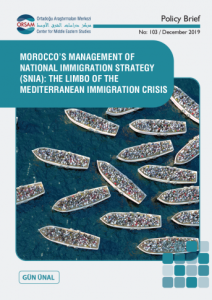 All the characteristics attributed to the blacks are of the negative side as they all imply the harm, and the badness along with the inferiority compared to the whites. It is thus a sort of discrimination socially speaking. The above stated has remained us of the sociological trend which belongs to Chicago school in USA.
All the characteristics attributed to the blacks are of the negative side as they all imply the harm, and the badness along with the inferiority compared to the whites. It is thus a sort of discrimination socially speaking. The above stated has remained us of the sociological trend which belongs to Chicago school in USA.
The ethnic relatationships refers to the difference in terms of ethnicity, which is not in itself a sociological data but a social one which is based upon the classification of individuals according to their ethnicity. In other words, though the African migrants and Moroccan migrants, those of the black color skin, differ in terms of the home country yet they bear the sameness in terms of their ethnicity. That is why we can say that they differ from each other ethnically speaking from those of a white skin.
The migrants escape from the drought to the living in the marginal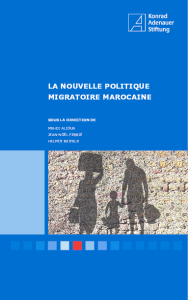
The field work which has been carried out in the same regard has revealed that the situation, say, the worst one in which migrants live refers to the harshness in which the individuals live by and large. It also refers to the racism that characterizes Moroccans. From the claims of the interviewees, we can come up with the fact that the racism of Moroccans has its historical roots, which has started since the earlier time Moroccans used to be characterized by such undesirable traits while joking. However, the end was to make laughter yet unconsciously developed by the time to become stereotypes which has turned into the racism.
It is traced back to the cultural diversity that characterizes the Moroccan society. A set of examples can be given in this regard. For example, people who are originated from the Souss are characterized by “Chluh” and misers. The first trait refers to their ethnic belongings while the second refers to the misery.
People who are originated in the middle of Morocco such as Casablanca and Settat along Kenitra and Rabat are characterized by “Aarobia”, which means they are coming From Rif. Along with such examples all of them and others imply that image of belittling people which is traceable to the tribal belongings and geographical one as well. Moroccans exercise racism against each other due to their skin color.
Always people with white skin are always of high status compared to the one who are with black skin. This racism drives us additionally to another question which the common sense in terms of living and refusal of racism. The concept of common sense in terms of living imply the multi-culturalism and the difference of social organizations which the host country witnessed, this does not even indicated in the words of the interviewees. Non acceptance of the host country for the migrants refers to the issue of racism and also leads us to question about the absence of common sense in terms of living which has been circulated in the Media scene.
 Climate changes necessitates the development of spiritual side of individuals
Climate changes necessitates the development of spiritual side of individuals
The common sense of living together remains one of the main states of the societies in which the whole categories do interact and behave however different in their skin color, cultural and linguistic along with ethnic belongings. They have become intersected with respect to their differences by the omnipresence of dialogue beyond violence and conflict. Such kind of living together is not restricted to the management of difference based on the traits mentioned before along with the religious ones or even considering other means to put an end to such conflicts within one social core, yet it moves even beyond to include the sociological depth to construct an example of common values that abide by and even scare the human values. To successfully deal with such, all what is required to be conscious of the difference that lie between individuals within one single geographical space. This leads us to put into use the common sense of living together as it does not come out of nothing yet an outcome of self-consciousness and its belief in accepting others with all their differences within one social system in which mutual interest lies along with the complementary relation with it all parts.
Following this has driven us to get to the so – called the sovereignty of human identity and common sense of living together. Beyond such condition we would fail to even talk about the society which respect and accept migrants. The responsibility is thus sharable between the host country and the migrant. For this reason, respect, acceptanceis required towards each other though the differences that lie between them in terms of their identity and traditions.
The interviewee claims that the Moroccans are racists only against the migrants who are living at low ebb in such host land, which does not accept the others, from her perspective, which worsen even the situation of migrants. On the other hand the Moroccan State has elaborated migration policies to facilitate the social integration for these sub-Saharan migrants. As well as, immigration to Morocco is governed by Act No. 02-03 relative to the entry and stay of foreigners in the kingdom of Morocco, illegal emigration and immigration (Moroccan Kingdom, Ministry in Charge of Moroccan living Abroad and Migration Affairs, 2018: 4).
The same goes on in the side of other migrants who are living in the society, such as the Syrians. The latter fail to be positively in contact with other migrants who are coming from West Africa. Many considerations are there like the cultural and the one related to identity. The blacks are less inferior compared to the others adding to the degree of harshness in which they are living, in which both migrants do live.
A set of social illnesses such as begging, thief and other criminal acts have appeared due to such Ghetto. And this has referred to mis-organazation that has been suggested by the sociologist William Isaac Thomas while he has carried out a study on the farmer from Poland in Europe and America in 1908. The sociologist has considered that the mis-organazation requires the reform of organization. In most of the times the concept issued to indicate the individual deconstruction and the absence of control or even the weakness inters of the social order; while the reform of the organization means the process by which the integration has come into realization (Abdulrahman al-Malik, 2016: 109).
Based on the words of some migrants
«I have come to Morocco since five years and I have spent three years in Casa Blanca along with two years in Agade, while I was I Casablanca I was working in the center of communication yet while the period was over, say, that of residency I have become informal and undocumented migrant; which has resulted in not being legally accepted at work. This had a great impact on the salary I used to get, which was diminished. A then I decided to leave to Agade and then work in the aesthetic centers as it was my own dream since a long time. The reason is that I have already got a diploma in this field while I was in Dakar yet I failed to find a job that why I decided to depart to elsewhere, and mainly Agadir» (Personal Interview, 2019).
From our speech with the migrant single it becomes clear that the migrant has changed her strategy as being affected by rhea environment in which she has been working. Her unstasfication to work in the center of communication has its say in her decision as well though the work granted her a living. Yet as soon as the dynamics of direction have been changed by the migrant and while the period has been over, the migrant has moved from documented migrant to undocumented one.
While her Visa has been over, them the migrant has changed her direction towards again to work there legally. The city of Agadir has remained thus the source of realizing her dream. Her intentions and the environment have played a very important role in being satisfied there along with the readiness as well. Yet these conditions in which she lived along with other sides issues from not only her but also other migrants have lead us to question about the presence of migration policies ?
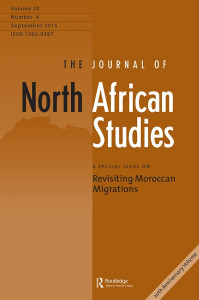 By and large, the multi-representations and social stereotypes towards the migrants mainly the ones who are coming from Senegal revolve around the issue of begging, thief, the spooling the image of Agadircity adding to the conflict. All these have come as a result of the social actors, which are resulted in their interaction with three migrants in certain times and the what they have heard and see about the migrants in the host country and what the worst conditions they have been living, and this leads us to the theory of the sociologist Robert Park and what he stated about the situation of migrant, which is indeed worse. On the one hand, so indicates the both categories of culture.
By and large, the multi-representations and social stereotypes towards the migrants mainly the ones who are coming from Senegal revolve around the issue of begging, thief, the spooling the image of Agadircity adding to the conflict. All these have come as a result of the social actors, which are resulted in their interaction with three migrants in certain times and the what they have heard and see about the migrants in the host country and what the worst conditions they have been living, and this leads us to the theory of the sociologist Robert Park and what he stated about the situation of migrant, which is indeed worse. On the one hand, so indicates the both categories of culture.
On the one hand, the migrant finds himself hold the Agaderian culture and on the other hand holds his own culture. Taking both sides portrays that being isolated cannot be taken as a negative characteristic. This argued by the fact that instability, which distinct the marginalized human beings on the one hand, and also his freedom and readiness to take adventures and involve in new experiences so that he can construct new social relationships. By this way the migrant lives dual cultures (Abdulrahman al-Malik, 2016: 145).
By and large, it can be said that the image that Agaderian hold about migrants mainly the Senegalese remains negative compared to that they have about migrants from France. The latter are much more dominant in their presence in Agade compared to the African migrants more notably senagealise. These representations and stereotypes which are produced by the Agaderian society towards French migrants are restricted by many considerations along with specific traits such the rise of economic prosperity of the European countries and the historical echoes of the French colonialism in Morocco.
The role of sociologist: Contribution to the construction of universal human being the unprecedented changes mainly climatic that the world has witnessed in recent days will arguably lead to localize human beings in a one geographical place. This has imposed on sociologists to actively interact and involved in the re-making of a universal human beings. This indeed responds to what has been entailed in the national immigration and asylum strategy is the product of a participatory approach. It was developed in full consultation with all the partners involved in migration issues, public authorities, local authorities, civil society, researchers and academics and international organizations. This consultation remains a determining principle of action of the delegated ministry in charge of Moroccans residing abroad and migration affairs for the implementation and monitoring of this strategy. The SNIA (Stratégie Nationale d’Immigration et d’Asile) applies to all foreigners present on Moroccan territory. However, it was designed to meet the needs of specific categories of migrants, and in particular irregular migrants, regularized migrants, refugees and asylum seekers and, more generally, any foreign person in a situation of vulnerability in Morocco.
Dialoghi Mediterranei, n. 54, marzo 2022
[*] Abstract
É quanto mai urgente riconoscere che il cambiamento climatico gioca un ruolo importante nelle migrazioni umane, un dato empirico che non può più essere ignorato. Già dal 1990, molti gruppi di esperti avevano affermato che le mutazioni ambientali avrebbero presto prodotto effetti sulla mobilità umana. Inoltre, nel 2007 altri scienziati del clima avevano autorevolmente stabilito che i cambiamenti indotti dall’uomo stanno rovinosamente accelerando e avranno presto gravi impatti sull’ambiente e sulla vita umana. Nonostante esista una relazione multicausale tra clima, disastri, sfollamenti e migrazioni, questo articolo cerca di dimostrare il chiaro e stretto legame tra i fenomeni e indaga le sfide e le risposte di protezione elaborate in questo contesto. Vengono presentati alcuni primi risultati empirici in relazione a questi nessi, concentrandosi sulle condizioni dei popoli subsahariani in Marocco e sugli stereotipi razzisti che stigmatizzano la loro identità di neri da parte dei locali.
Note
[1] Ebola is a virus that causes problems with how your blood clots. It is known as a hemorrhagic fever virus, because the clotting problems lead to internal bleeding, as blood leaks from small blood vessels in your body. The virus also causes inflammation and tissue damage.
References
Al-Qusayr, Abdel Qader, (1992) Migration from the countryside to the cities, Dar Al-Nahda Al-Arabiya, Lebanon.
Alioua, Mehdi, (2011), L’étape marocaine des transmigrants subsahariens en route vers l’Europe: l’épreuve de la construction des réseaux et de leurs territoires (thèse de doctorat), Université de Toulouse France.
Auzou, Philippe, (1987), Encyclopedia: current knowledge, Edition, Philippe Auzou,
Ben Malukah, Shahinaz, (2015), School social depressions among students who show symptoms of dropping out of school (PhD thesis), University of Algiers 2.
Sylvie, Mazzella, (2016), Sociologies des migrations, qui sais-je ? Paris.
Yassin, Yasni, (2017), “Blacks and the Moroccan Visual Media: The First and Second Moroccan Laws as a Model”, Researchers Journal, Morocco, No. 1.
_____________________________________________________________
Abderrahim Anbi, Professor of Sociology, Faculty of Arts and Humanities-Ibnou Zohr University/ Agadir. Area of specialization: Rural sociology, gender studies, family dynamics and politics, social change and the inclusion of youth, identities, and migration. Publication: Rural through the prism of social change: sociological Regards, (2014) Agadir: Ibnou Zohr University, (French); Rural Moroccan family from the unity of production to consumption, (2014) Agadir: Ibnou Zohr University (Arabic); Mobilités et Solidarités de la Crossée des Chemins au Destin Commun ? Faculté des lettres et des sciences Humaines, Université Ibn Zohr Agadir; 2020.
_____________________________________________________________



